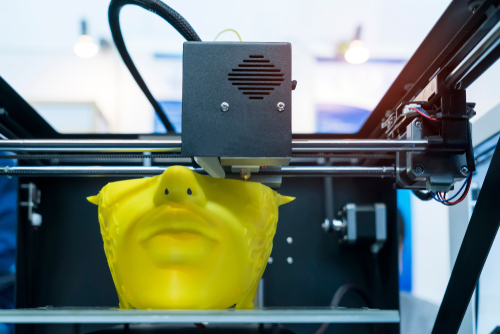Everything you need to know to create 3D files for 3D printing.
As an expert on the Jellypipe platform for 3D printing, we are often asked questions about 3D printing and the requirements for the documents to create a compliant print file. That's why we have summarized and answered the most frequently asked questions for you.
Here you will find answers to your questions, if you...
...want to create your own 3D file.
1. how can I create 3D models myself?2. how can I make sure that my model can also be printed?3. what wall thicknesses are possible with 3D printing?4. what is specifically to be observed when designing wall thicknesses?5. what is to be observed in Selective Laser Sintering when designing partition walls?6. what is the minimum amount of raised and recessed details to be applied?7. what software do I need to create a 3D model?
...already have a 3D file and would like to order it in the Jellypipe 3D printing universe.
8. can I have my own 3D models printed?9. how do I upload my 3D model in the online configurator?10. do I need an STL file for 3D printing?11. which 3D file formats can I upload in the 3D online configurator?12. what can I do if textures and colours are lost when uploading 3D files?13. how is the price for a 3D model calculated at Jellypipe?14. are my 3D models really treated confidentially?

1. how can I create 3D models myself:- when designing and modelling 3D files, the following must be observed:- all models must be "waterproof", i.e. completely closed,- there must be no open areas or edges,- if you want a smooth surface, your model must have a high number of polygons - Your 3D surface object should be defined as a triangular or quadrilateral mesh.- any partial bodies must be completely closed and can be "plugged" into the model.- the minimum wall thickness is usually 0.8 mm, but varies depending on the materials. (Click here for an overview of the minimum wall thicknesses per material)- which properties the 7 technologies in the Jellypipe 3D universe have,- where they are ideally used- and which materials can be used.2. How can I be sure that my model can be printed?3D experts from the Jellypipe 3D ecosystem check your models before printing. If any problems occur, you will be called to find a solution. We are also happy to offer help with the revision or repair of 3D constructions.3. What wall thicknesses are possible with 3D printing? The answer to this question depends very much on the material selected and the 3D printing process associated with it. Thereby the range of the smallest possible wall thicknesses reaches from 0.3 mm in metal printing up to 2.0 mm in CJP printing with polymer gypsum as well as in FDB printing with PMMA plastic or quartz sand. The wall thicknesses required in each case can be found in the technology overview of the Jellypipe 3D printing ecosystem.4. What should be taken into account in concrete terms when designing wall thicknesses? To ensure the necessary stability of the model, a wall thickness of at least 0.8 mm is recommended as a rule of thumb, both for partition walls inside the model and for external walls. This value, illustrated in the figure below, refers to SLS printing with PA plastic.5. What should be considered in Selective Laser Sintering when designing partitions? Partitions in SLS printing 3D models should be designed to a thickness of at least 1 mm to ensure optimum stability of the printed model.6 . What is the minimum thickness for both raised and recessed details? 0.5mm thick is recommended to ensure that both raised and recessed details in 3D models are designed as accurately as possible.7 What software do I need to create a 3D model? If you want to create your own 3D printed models, you will thereby need 3D modeling software. There is a large selection of partly free software available, from which you can choose according to your level of knowledge and requirements. thereby for beginners Google SketchUp and Smoothie 3D software are particularly suitable, while for users with advanced CAD knowledge OpenSCad and Blender are recommended. If you like traditional drawing, thereby we recommend Sculptris as 3D modelling software.8. can I print my own 3D models? of course you can upload your models directly into the 3D configurator. The configurator checks your file for the most important features of a 3D design and tells you whether your 3D file is compatible with the connected printers.9 How do I upload my 3D model in the online configurator? After you have registered and logged in to your reseller's store, you can click on "Select file" and upload the file. After your file has been checked for 3D printability, you can select the desired materials and finishing. After you have configured your 3D model, you will receive various offers from resellers like us. Depending on your needs, you can choose the best value for money offer or the fastest delivery.10. Do I need an STL file for 3D printing? STL (Surface Tesselation Language) has become the most common file format for 3D files, and some vendors in the 3D printing services market require the presence of such a file. At Jellypipe, however, we also offer 3D printing from other file formats, such as obj files, and some specialist resellers can create printable 3D files from 2D files (i.e. photos or drawings).
Click here for the 3D online platform!

